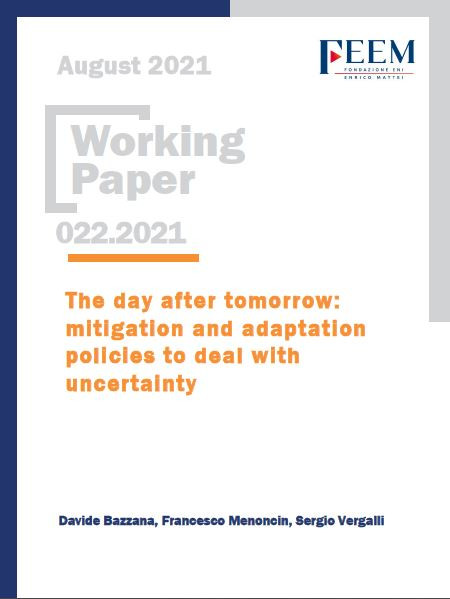The day after tomorrow: mitigation and adaptation policies to deal with uncertainty

30.08.2021
Davide Bazzana (Università degli Studi di Brescia, Fondazione Eni Enrico Mattei); Francesco Menoncin (Università degli Studi di Brescia, Fondazione Eni Enrico Mattei); Sergio Vergalli (Università degli Studi di Brescia, Fondazione Eni Enrico Mattei)
C6; C61; Q5; Q54
Uncertainty Modelling, Catastrophic Events, Mitigation, Adaptation, Optimal management
The catastrophic events are characterized by “low frequency and high severity”. Nevertheless, during the last decades, both the frequency and the magnitude of these events have been significantly rising worldwide. In 2021, the European Commission adopted a new Strategy on Adaptation to Climate Change aiming to reinforce the adaptive capacity and minimize vulnerability to the effects of climate change and natural catastrophes. In a continuous time framework over an infinite horizon, we solve in closed form the problem of a representative consumer who holds a production technology (firm) and who optimises with respect to both the intertemporal consumption and the mix between an insurance (adaptation) against the magnitude of the catastrophic losses, and an effort strategy (mitigation) aimed at reducing the frequency of such losses. The catastrophic events are modelled as a Poisson jump process. We then propose some numerical simulations calibrated to the country-specific data of the five main European economies (Germany, France, Italy, Spain, and Netherlands). Our model demonstrates that an optimal mix of mitigation/effort strategies allows to reduce the volatility of the economic growth rate, even if its level may be lowered due to the effort costs. Simulations allow us to also conclude that different countries must optimally react differently to catastrophes, which means that a one-for-all policy does not seem to be optimal.
***
Suggested citation: D. Bazzana, F. Menoncin, S. Vergalli, ‘The day after tomorrow: mitigation and adaptation policies to deal with uncertainty’, Nota di Lavoro 22.2021, Milano, Italy: Fondazione Eni Enrico Mattei
